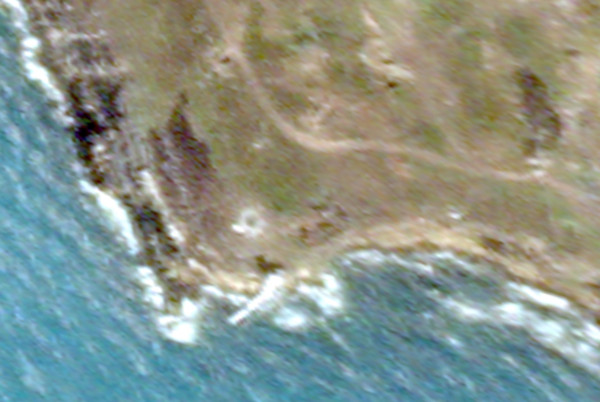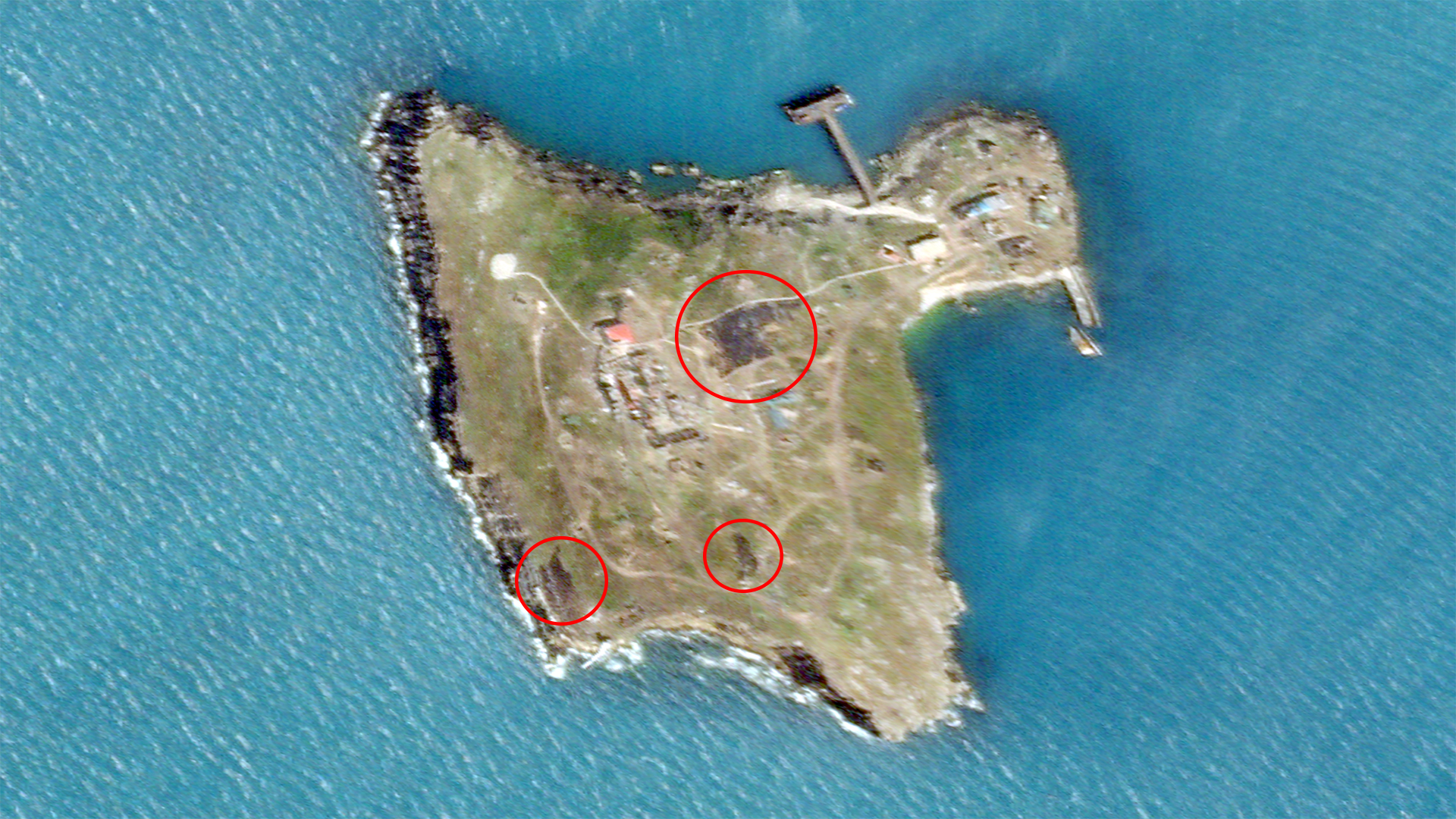A satellite image The War Zone has obtained from Planet labs shows evidence supporting the Ukrainian military’s claims that they have recently carried out air and artillery strikes on Russian positions on Snake Island in the western end of the Black Sea. Unconfirmed details about these strikes had first begun to emerge yesterday, along with news that Russian-occupied gas drilling rigs elsewhere in the region had been struck, as you can read more about in our initial reporting here.
The Planet Labs satellite image, which was shot on June 21, 2022, shows at least three newly darkened areas on Snake Island, also known as Zmiinyi Island. These appear to be scorch marks reflecting recent explosions and/or fires. These visibly discolored spots were not seen in an earlier satellite image of the island from Planet Labs, which was taken just before noon local time on June 20.




A comparison of separate images taken on June 19 and June 21 from a different commercial provider, Copernicus, provides further evidence that these scorch marks are new.
It’s unclear what the specific targets of these strikes may have been. The scorched areas do align broadly with the locations of various Russian positions, including emplaced air defense assets, on the island as seen in earlier satellite imagery.
The new large scorched area in the center of the island is also immediately to the east of a group of structures that were all but destroyed in airstrikes by Ukrainian fixed-wing combat jets back in May. Those strikes coincided with an attack by Ukrainian TB2 drones that sunk a Russian landing craft that was bringing in a Tor-series surface-to-air missile system.
Since those strikes, Russian forces have actively attempted to build up air defense capabilities on the island, including the deployment of more Tor-series surface-to-air missile systems. Just last week, the Ukrainian armed forces claimed to have destroyed another Russian ship, the rescue vessel Vasily Bekh, with western-supplied Harpoon anti-ship missiles. The exact fate of Vasily Bekh, which was reportedly heading to the island carrying yet another Tor, remains unconfirmed.
As for what weapon systems Ukrainian forces may have used to carry out these new strikes, it’s not entirely clear. A Ukrainian intelligence source told The War Zone that multiple types of 155mm howitzers, 122mm BM-21 and 220mm BM-27 rocket artillery systems, Su-24 Fencer swing-wing combat jets, and Su-27 Flanker fighters had all taken part in recent operations targeting Snake Island, but this so far remains unconfirmed. It is worth pointing out that the very shortest distance between mainland Ukraine and the island is around 22 miles, which is beyond the range of even many extended-range 155mm shells and 122mm rockets. This can only raise questions about exactly how those weapons would have been employed in this instance, if they were at all.
Ukraine is also set to receive M142 High Mobility Artillery Rocket Systems (HIMARS) and precision-guided 227mm M30/M31 rockets from the United States. We don’t know if any M142s are in action in Ukraine already, but they would have the range necessary to strike targets on Snake Island, something The War Zone has noted would be a prime use of these systems.

For its part, the Russian Ministry of Defense has also said that Ukrainian howitzers and rocket artillery, as well as drones, were involved in the recent strikes. Authorities in Russia also claimed to have intercepted all of the incoming rounds and shot down 13 drones, and then rebuffed an amphibious assault, but have provided no evidence to substantiate any of this. Russian officials have said on multiple occasions that the country’s forces have thwarted Ukrainian attempts to recapture the island, all without providing any hard evidence, and the satellite imagery shows that at least some munitions hit the island in the past 24 hours.
That being said, the Ukrainian military’s Operational Command South issued a public statement today saying that unspecified operations focused on Snake Island were still ongoing and that further details would not be released until this particular effort is concluded. This may potentially indicate that Ukrainian forces are indeed somewhere in the process of mounting a more pronounced attack on the island.
Recapturing Snake Island would, of course, be a significant strategic victory. At a time when Ukrainian forces continue to threaten Russian naval vessels in the western Black Sea, it presents an unsinkable platform for Russian air defense assets, including longer-range systems capable of extending the counter-air umbrella into airspace over Ukraine proper. This could potentially deter U.S. military intelligence, surveillance, and reconnaissance (ISR) aircraft, as well those from other NATO member states, which have been operating in and around the Black Sea region. At least some of the information those aircraft and other western ISR assets gather, including about Russian ship movements, is reportedly making its way directly to Ukrainian forces.
Other weapons could potentially be based on the island, including surface-to-surface missiles capable of striking into Ukraine itself. It also presents another location from which Russia’s military can enforce its debilitating blockade of Ukraine’s Black Sea ports.
“Ukrainian coastal defense capability has largely neutralized Russia’s ability to establish sea control and project maritime force in the north-western Black Sea,” according to a public U.K. Ministry of Defense assessment released today. “This has undermined the viability of Russia’s original operational design for the invasion, which involved holding the Odesa region at risk from the sea.”
It would also be a significant achievement from propaganda and morale-boosting perspectives. Russian forces captured the island very early on in the conflict and the refusal to surrender by Ukrainian border guards who had been stationed there when the invasion kicked off has become a major rallying cry.
Whatever the scope of Ukrainian strikes and other operations targeting Snake Island might be at present, the recent fighting there only continues to underscore its importance on many levels to both sides in the conflict.
Contact the author: joe@thedrive.com
